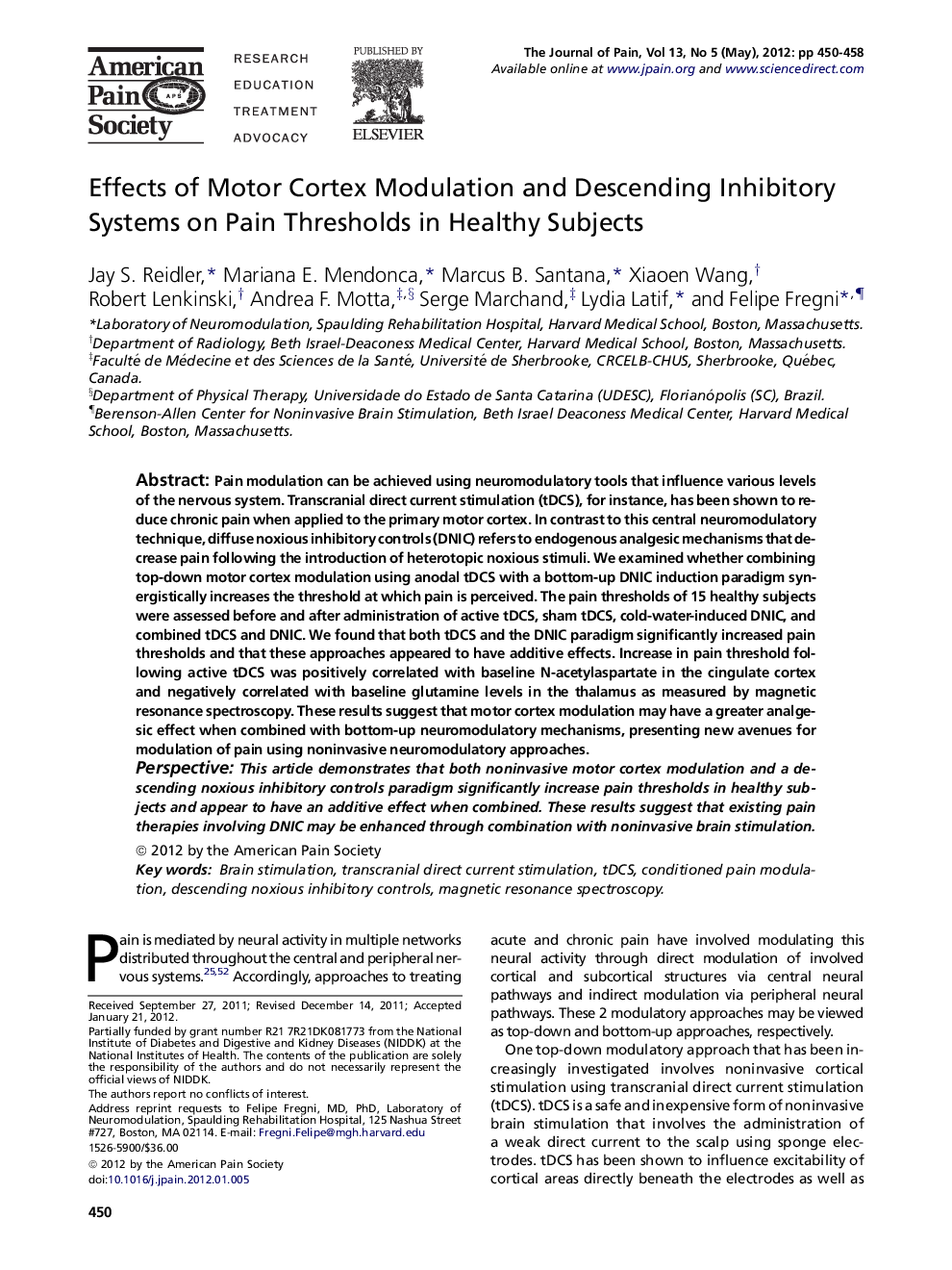| Article ID | Journal | Published Year | Pages | File Type |
|---|---|---|---|---|
| 2728893 | The Journal of Pain | 2012 | 9 Pages |
Pain modulation can be achieved using neuromodulatory tools that influence various levels of the nervous system. Transcranial direct current stimulation (tDCS), for instance, has been shown to reduce chronic pain when applied to the primary motor cortex. In contrast to this central neuromodulatory technique, diffuse noxious inhibitory controls (DNIC) refers to endogenous analgesic mechanisms that decrease pain following the introduction of heterotopic noxious stimuli. We examined whether combining top-down motor cortex modulation using anodal tDCS with a bottom-up DNIC induction paradigm synergistically increases the threshold at which pain is perceived. The pain thresholds of 15 healthy subjects were assessed before and after administration of active tDCS, sham tDCS, cold-water-induced DNIC, and combined tDCS and DNIC. We found that both tDCS and the DNIC paradigm significantly increased pain thresholds and that these approaches appeared to have additive effects. Increase in pain threshold following active tDCS was positively correlated with baseline N-acetylaspartate in the cingulate cortex and negatively correlated with baseline glutamine levels in the thalamus as measured by magnetic resonance spectroscopy. These results suggest that motor cortex modulation may have a greater analgesic effect when combined with bottom-up neuromodulatory mechanisms, presenting new avenues for modulation of pain using noninvasive neuromodulatory approaches.PerspectiveThis article demonstrates that both noninvasive motor cortex modulation and a descending noxious inhibitory controls paradigm significantly increase pain thresholds in healthy subjects and appear to have an additive effect when combined. These results suggest that existing pain therapies involving DNIC may be enhanced through combination with noninvasive brain stimulation.
